The mineralogy of Iron
| General Properties | |
|---|---|
| Symbol: | Fe |
| Atomic Number: | 26 |
| Standard atomic weight (Ar): | 55.845(2) |
| Electron configuration: | [Ar] 3d6 4s2 |
| Photos | ||
|---|---|---|
| < | Iron electrolytic and 1cm³ cube | > |
| Atomic Properties | |
|---|---|
| Electronegativity (Pauling scale): | 1.83 |
| Atomic Radius: | 156 pm |
| Ionic Radius: | 78 pm (+2*) |
| 1st Ionization energy: | 763 kJ/mol |
| 1st Electron affinity: | -16 kJ/mol |
| Oxidation States: | -2,-1,1,2,3,4,5,6 |
| Physical Properties | |
|---|---|
| Standard State: | solid |
| Bonding Type: | metallic |
| Melting Point: | 1811 K |
| Boiling Point: | 3134 K |
| Density: | 7.87 g/cm3 |
| Metal/Non-Metal: | transition metal |
| Main isotopes of Iron | ||||
|---|---|---|---|---|
| Isotope | % in Nature | Half Life | Decay type | Decay product |
| 54Fe | 5.8% | >3.1×1022y | β+β+ ? | 54Cr |
| 55Fe | synthetic | 2.73y | ε | 55Mn |
| 56Fe | 91.72 | stable | ||
| 57Fe | 2.2% | Stable | ||
| 58Fe | 0.28% | stable | ||
| 59Fe | synthetic | 44.503d | β− | 59Co |
| 60Fe | synthetic | 2.6×106y | β− | 60Co |
| Main ions of Iron | ||||
|---|---|---|---|---|
| Name | Ion | Example minerals | ||
| Iron(II) (Ferrous) | Fe2+ | Siderite | ||
| Iron(III) (Ferric) | Fe3+ | Hematite, Goethite | ||
| Other Information | |
|---|---|
| Year Discovered: | Ancient |
| Named For: | From the Anglo-Saxon: "holy metal", "strong metal" |
| CPK color coding: | #E06633 |
| External Links: | WikipediaWebElementsLos Alamos National LaboratoryTheodore Gray's PeriodicTable.com |
| Simple Compounds and Mineral Names | |||||||||||||||||||||||||||||||||||||||||||||||||||||||||||||||||||||||||||||||||||||||||||||||||||||||||||||||||||||||||||||||||||||||||||||||||||||||
|---|---|---|---|---|---|---|---|---|---|---|---|---|---|---|---|---|---|---|---|---|---|---|---|---|---|---|---|---|---|---|---|---|---|---|---|---|---|---|---|---|---|---|---|---|---|---|---|---|---|---|---|---|---|---|---|---|---|---|---|---|---|---|---|---|---|---|---|---|---|---|---|---|---|---|---|---|---|---|---|---|---|---|---|---|---|---|---|---|---|---|---|---|---|---|---|---|---|---|---|---|---|---|---|---|---|---|---|---|---|---|---|---|---|---|---|---|---|---|---|---|---|---|---|---|---|---|---|---|---|---|---|---|---|---|---|---|---|---|---|---|---|---|---|---|---|---|---|---|---|---|---|
| Nitrides | diiron nitride | Fe2N | |||||||||||||||||||||||||||||||||||||||||||||||||||||||||||||||||||||||||||||||||||||||||||||||||||||||||||||||||||||||||||||||||||||||||||||||||||||
| tetrairon nitride | Fe4N | Roaldite | |||||||||||||||||||||||||||||||||||||||||||||||||||||||||||||||||||||||||||||||||||||||||||||||||||||||||||||||||||||||||||||||||||||||||||||||||||||
| Sulfides | iron (II) sulfide | FeS | +2 | Troilite, Pyrrhotite | |||||||||||||||||||||||||||||||||||||||||||||||||||||||||||||||||||||||||||||||||||||||||||||||||||||||||||||||||||||||||||||||||||||||||||||||||||
| iron persulfide | FeS2 | +2 | Pyrite, Marcasite | ||||||||||||||||||||||||||||||||||||||||||||||||||||||||||||||||||||||||||||||||||||||||||||||||||||||||||||||||||||||||||||||||||||||||||||||||||||
| triiron tetrasulfide | Fe3S4 | +2,+3 | Greigite | ||||||||||||||||||||||||||||||||||||||||||||||||||||||||||||||||||||||||||||||||||||||||||||||||||||||||||||||||||||||||||||||||||||||||||||||||||||
| Selenides | iron selenide | FeSe | +2 | ||||||||||||||||||||||||||||||||||||||||||||||||||||||||||||||||||||||||||||||||||||||||||||||||||||||||||||||||||||||||||||||||||||||||||||||||||||
| iron perselenide | FeSe2 | +2 | Ferroselite, Dzharkenite | ||||||||||||||||||||||||||||||||||||||||||||||||||||||||||||||||||||||||||||||||||||||||||||||||||||||||||||||||||||||||||||||||||||||||||||||||||||
| Tellurides | iron telluride | FeTe | +2 | ||||||||||||||||||||||||||||||||||||||||||||||||||||||||||||||||||||||||||||||||||||||||||||||||||||||||||||||||||||||||||||||||||||||||||||||||||||
| iron pertelluride | FeTe2 | +2 | Frohbergite | ||||||||||||||||||||||||||||||||||||||||||||||||||||||||||||||||||||||||||||||||||||||||||||||||||||||||||||||||||||||||||||||||||||||||||||||||||||
| Hydroxides | iron (II) hydroxide | Fe(OH)2 | +2 | ||||||||||||||||||||||||||||||||||||||||||||||||||||||||||||||||||||||||||||||||||||||||||||||||||||||||||||||||||||||||||||||||||||||||||||||||||||
| iron (III) hydroxide | Fe(OH)3 | +3 | Bernalite | ||||||||||||||||||||||||||||||||||||||||||||||||||||||||||||||||||||||||||||||||||||||||||||||||||||||||||||||||||||||||||||||||||||||||||||||||||||
| iron (III) oxide-hydroxide | FeO(OH) | +3 | Goethite, Akaganeite, Lepidocrocite, Feroxyhyte | ||||||||||||||||||||||||||||||||||||||||||||||||||||||||||||||||||||||||||||||||||||||||||||||||||||||||||||||||||||||||||||||||||||||||||||||||||||
| Fluorides | iron (II) fluoride | FeF2 | +2 | ||||||||||||||||||||||||||||||||||||||||||||||||||||||||||||||||||||||||||||||||||||||||||||||||||||||||||||||||||||||||||||||||||||||||||||||||||||
| iron (III) fluoride | FeF3 | +3 | |||||||||||||||||||||||||||||||||||||||||||||||||||||||||||||||||||||||||||||||||||||||||||||||||||||||||||||||||||||||||||||||||||||||||||||||||||||
| Chlorides | iron (II) chloride | FeCl2 | +2 | Lawrencite | |||||||||||||||||||||||||||||||||||||||||||||||||||||||||||||||||||||||||||||||||||||||||||||||||||||||||||||||||||||||||||||||||||||||||||||||||||
| iron (III) chloride | FeCl3 | +3 | Molysite | ||||||||||||||||||||||||||||||||||||||||||||||||||||||||||||||||||||||||||||||||||||||||||||||||||||||||||||||||||||||||||||||||||||||||||||||||||||
| iron (II) chloride dihydrate | FeCl2 · 2H2O | +2 | Rokühnite | ||||||||||||||||||||||||||||||||||||||||||||||||||||||||||||||||||||||||||||||||||||||||||||||||||||||||||||||||||||||||||||||||||||||||||||||||||||
| Bromides | iron (II) bromide | FeBr2 | |||||||||||||||||||||||||||||||||||||||||||||||||||||||||||||||||||||||||||||||||||||||||||||||||||||||||||||||||||||||||||||||||||||||||||||||||||||
| iron (III) bromide | FeBr3 | ||||||||||||||||||||||||||||||||||||||||||||||||||||||||||||||||||||||||||||||||||||||||||||||||||||||||||||||||||||||||||||||||||||||||||||||||||||||
| Iodides | Iron (II) diiodide | FeI2 | |||||||||||||||||||||||||||||||||||||||||||||||||||||||||||||||||||||||||||||||||||||||||||||||||||||||||||||||||||||||||||||||||||||||||||||||||||||
| Iron (III) iodide | FeI3 | ||||||||||||||||||||||||||||||||||||||||||||||||||||||||||||||||||||||||||||||||||||||||||||||||||||||||||||||||||||||||||||||||||||||||||||||||||||||
| Oxides | iron (II) oxide | FeO | +2 | ||||||||||||||||||||||||||||||||||||||||||||||||||||||||||||||||||||||||||||||||||||||||||||||||||||||||||||||||||||||||||||||||||||||||||||||||||||
| iron (iii) oxide | Fe2O3 | +3 | Hematite | ||||||||||||||||||||||||||||||||||||||||||||||||||||||||||||||||||||||||||||||||||||||||||||||||||||||||||||||||||||||||||||||||||||||||||||||||||||
| triiron tetraoixde | Fe3O4 | +2,+3 | Magnetite | ||||||||||||||||||||||||||||||||||||||||||||||||||||||||||||||||||||||||||||||||||||||||||||||||||||||||||||||||||||||||||||||||||||||||||||||||||||
| Carbonates | iron (II) carbonate | FeCO3 | +2 | Siderite | |||||||||||||||||||||||||||||||||||||||||||||||||||||||||||||||||||||||||||||||||||||||||||||||||||||||||||||||||||||||||||||||||||||||||||||||||||
| iron (III) carbonate | Fe2(CO3)3 | +3 | |||||||||||||||||||||||||||||||||||||||||||||||||||||||||||||||||||||||||||||||||||||||||||||||||||||||||||||||||||||||||||||||||||||||||||||||||||||
| Nitrates | iron (II) nitrate | Fe(NO3)2 | +2 | ||||||||||||||||||||||||||||||||||||||||||||||||||||||||||||||||||||||||||||||||||||||||||||||||||||||||||||||||||||||||||||||||||||||||||||||||||||
| iron (III) nitrate | Fe(NO3)3 | +3 | |||||||||||||||||||||||||||||||||||||||||||||||||||||||||||||||||||||||||||||||||||||||||||||||||||||||||||||||||||||||||||||||||||||||||||||||||||||
| iron (III) nitrate nonahydrate | Fe(NO3)3 · 9H2O | +3 | |||||||||||||||||||||||||||||||||||||||||||||||||||||||||||||||||||||||||||||||||||||||||||||||||||||||||||||||||||||||||||||||||||||||||||||||||||||
| Sulfates | iron (II) sulfate | FeSO4 | +2 | ||||||||||||||||||||||||||||||||||||||||||||||||||||||||||||||||||||||||||||||||||||||||||||||||||||||||||||||||||||||||||||||||||||||||||||||||||||
| iron (III) sulfate | Fe2(SO4)3 | +3 | Mikasaite | ||||||||||||||||||||||||||||||||||||||||||||||||||||||||||||||||||||||||||||||||||||||||||||||||||||||||||||||||||||||||||||||||||||||||||||||||||||
| iron (II) sulfate hydrate | FeSO4 · H2O | +2 | Szomolnokite | ||||||||||||||||||||||||||||||||||||||||||||||||||||||||||||||||||||||||||||||||||||||||||||||||||||||||||||||||||||||||||||||||||||||||||||||||||||
| iron (II) sulfate tetrahydrate | FeSO4 · 4H2O | +2 | Rozenite | ||||||||||||||||||||||||||||||||||||||||||||||||||||||||||||||||||||||||||||||||||||||||||||||||||||||||||||||||||||||||||||||||||||||||||||||||||||
| iron (II) sulfate pentahydrate | FeSO4 · 5H2O | +2 | Siderotil | ||||||||||||||||||||||||||||||||||||||||||||||||||||||||||||||||||||||||||||||||||||||||||||||||||||||||||||||||||||||||||||||||||||||||||||||||||||
| iron (II) sulfate hexahydrate | FeSO4 · 6H2O | +2 | Ferrohexahydrite | ||||||||||||||||||||||||||||||||||||||||||||||||||||||||||||||||||||||||||||||||||||||||||||||||||||||||||||||||||||||||||||||||||||||||||||||||||||
| iron (II) sulfate heptahydrate | FeSO4 · 7H2O | +2 | Melanterite | ||||||||||||||||||||||||||||||||||||||||||||||||||||||||||||||||||||||||||||||||||||||||||||||||||||||||||||||||||||||||||||||||||||||||||||||||||||
| iron (III) sulfate pentahydrate | Fe2(SO4)3 · 5H2O | +3 | Lausenite | ||||||||||||||||||||||||||||||||||||||||||||||||||||||||||||||||||||||||||||||||||||||||||||||||||||||||||||||||||||||||||||||||||||||||||||||||||||
| iron (III) sulfate heptahydrate | Fe2(SO4)3 · 7H2O | +3 | Kornelite | ||||||||||||||||||||||||||||||||||||||||||||||||||||||||||||||||||||||||||||||||||||||||||||||||||||||||||||||||||||||||||||||||||||||||||||||||||||
| iron (III) sulfate nonahydrate | Fe2(SO4)3 · 9H2O | +3 | Paracoquimbite | ||||||||||||||||||||||||||||||||||||||||||||||||||||||||||||||||||||||||||||||||||||||||||||||||||||||||||||||||||||||||||||||||||||||||||||||||||||
| iron (III) sulfate undecahydrate | Fe2(SO4)3 · 11H2O | +3 | Quenstedtite | ||||||||||||||||||||||||||||||||||||||||||||||||||||||||||||||||||||||||||||||||||||||||||||||||||||||||||||||||||||||||||||||||||||||||||||||||||||
| Iron as a chromophore in minerals and gems | |
|---|---|
| Chromophore | Description |
| Fe2+ | Green colour, eg in forsterite (peridot) and the blue-green colour in phosphophyllite. In some minerals with high concentrations of Fe2+ the colour is brown. |
| Fe2+ in square planar site | Raspberry red colour in gillespite from El Roasrio, Baja California, Mexico. |
| Fe2+ in eight-coordinate site | Higher concentrations in pyrope garnet cause a deeper red colour. |
| Fe3+ in octahedral sites | When the Fe3+ ions are isolated by intervening ions it leads to a pale colour, such as the pale purple colour in strengite and coquimbite. Also the yellow-green colour in ferric silicates such as andradite. |
| Fe3+ in tetrahedral sites | Causes the pale yellow colour in a plagioclase feldspar from Lake County, Oregon. |
| Fe4+ in deformed tetrahedral silicon position | The colour in amethyst has been explained as Fe3+ replacing Silicon losing an electron due to radioactive bombardment to become tetravalent Fe4+. |
| Fe2+ - Fe3+ IVCT | Intervalence Charge Transfer between two adjacent metal ions. Usually causes blue-green coloration, examples include rockbridgeite and vivianite. |
| Fe2+ - Ti4+ IVCT | brown to brownish-red colouration eg in dravite and neptunite (where the reddish tint is more noticeable in thin section. |
| Mineral Diversity of Iron | |
|---|---|
| 1. Elements | 46 valid mineral species |
| 2. Sulfides And Sulfosalts | 125 valid mineral species |
| 3. Halides | 15 valid mineral species |
| 4. Oxides | 172 valid mineral species |
| 5. Carbonates | 10 valid mineral species |
| 6. Borates | 12 valid mineral species |
| 7. Sulfates | 112 valid mineral species |
| 8. Phosphates, Arsenates, Vanadates | 337 valid mineral species |
| 9. Silicates | 338 valid mineral species |
| 10. Organic Compounds | 5 valid mineral species |
| Total: | 1172 valid species containing essential Iron |
| Geochemistry of Iron | |
|---|---|
| Goldschmidt classification: | Siderophile |
| Fe2+ was one of the ions least depleted from the mantle in the formation of the crust. | |
| Fe3+ enters early-forming phases in igneous rocks. | |
| Fe2+ enters early-forming phases in igneous rocks. | |
| Fe3+ is commonly concentrated in residual soils and sediments. | |
| Fe3+ is concentrated in deep-sea ferromanganese nodules relative to seawater. | |
| Fe2+ solute can be a limiting nutrient in the growth of bacteria. | |
| Fe2+ solute can be a limiting nutrient in the oceans. | |
| Fe2+ solute is a micronutrient on land. | |
| Fe2+ is essential to nutrition of at least some vertebrates ('essential minerals'). | |
| Elemental Iron in Nature | ||
|---|---|---|
| Found as native element: | Iron | Fe |
| Taenite | (Fe,Ni) | |
| Found as natural alloy with Cu: | Tulameenite | Pt2CuFe |
| Found as natural alloy with Pt: | Isoferroplatinum | Pt3Fe |
| Tetraferroplatinum | PtFe | |
| Elemental Abundance for Iron | ||
|---|---|---|
| Crust (CRC Handbook) | 5.63 x 10-2 | mass fraction, kg/kg |
| Crust (Kaye & Laby) | 5.8 x 10-2 | mass fraction, kg/kg |
| Crust (Greenwood) | 6.2000 x 10-2 | mass fraction, kg/kg |
| Crust (Ahrens/Taylor) | 7.07 x 10-2 | mass fraction, kg/kg |
| Crust (Ahrens/Wänke) | 4.92 x 10-2 | mass fraction, kg/kg |
| Crust (Ahrens/Weaver) | 3.8 x 10-2 | mass fraction, kg/kg |
| Upper Crust (Ahrens/Taylor) | 3.50 x 10-2 | mass fraction, kg/kg |
| Upper Crust (Ahrens/Shaw) | 3.09 x 10-2 | mass fraction, kg/kg |
| Sea Water (CRC Handbook) | 2 x 10-9 | mass per volume fraction, kg/L |
| Sea Water (Kaye & Laby) | 3.4 x 10-9 | mass per volume fraction, kg/L |
| The Sun (Kaye & Laby) | 9.0 x 10-1 | atom mole fraction relative to Si=1 |
| Solar System (Kaye & Laby) | 9.0 x 10-1 | atom mole fraction relative to Si=1 |
| Solar System (Ahrens) | 9.00 x 10-1 (2.7%) | atom mole fraction relative to Si=1 (% uncertainty) |
| Element association of Iron in the Mineral World | |||
|---|---|---|---|
| This table compares the known valid mineral species listed listed with Iron and the other elements listed based on the official IMA formula. Note that unlike other sections on this page this includes non-essential elements. The first data column contains the total number of minerals listed with Iron and the element listed for that row. The second data column lists this number as a percentage of all minerals listed with Iron. The final data column compares this percentage against the percentage of all minerals that contain the element listed in each row. Click on a heading to sort. |
| Periodic Table | |||||||||||||||||||||||||||||||||||||||||||||||||||||||||||||||||||||||||||||||||||||||||||||||||||||||||||||||||||||||||||||||||||||||||||||||||||||||
|---|---|---|---|---|---|---|---|---|---|---|---|---|---|---|---|---|---|---|---|---|---|---|---|---|---|---|---|---|---|---|---|---|---|---|---|---|---|---|---|---|---|---|---|---|---|---|---|---|---|---|---|---|---|---|---|---|---|---|---|---|---|---|---|---|---|---|---|---|---|---|---|---|---|---|---|---|---|---|---|---|---|---|---|---|---|---|---|---|---|---|---|---|---|---|---|---|---|---|---|---|---|---|---|---|---|---|---|---|---|---|---|---|---|---|---|---|---|---|---|---|---|---|---|---|---|---|---|---|---|---|---|---|---|---|---|---|---|---|---|---|---|---|---|---|---|---|---|---|---|---|---|
| |||||||||||||||||||||||||||||||||||||||||||||||||||||||||||||||||||||||||||||||||||||||||||||||||||||||||||||||||||||||||||||||||||||||||||||||||||||||
| Manganese << Iron >> Cobalt | |||||||||||||||||||||||||||||||||||||||||||||||||||||||||||||||||||||||||||||||||||||||||||||||||||||||||||||||||||||||||||||||||||||||||||||||||||||||
| Most widespread minerals containing Iron | |||||||||||||||||||||||||
|---|---|---|---|---|---|---|---|---|---|---|---|---|---|---|---|---|---|---|---|---|---|---|---|---|---|
| This list of minerals containing Iron is built from the mindat.org locality database. This is based on the number of localities entered for mineral species and is therefore slanted towards minerals interesting to collectors with less coverage of common rock-forming-minerals so it does not give an undistorted distribution of Iron mineral species. It is more useful when comparing rare species rather than common species. |
| Name | Formula | Crystal System | Mindat Localities |
|---|---|---|---|
| Pyrite | FeS2 | Isometric | 46642 |
| Chalcopyrite | CuFeS2 | Tetragonal | 31945 |
| Magnetite | Fe2+Fe3+2O4 | Isometric | 18541 |
| Hematite | Fe2O3 | Trigonal | 17900 |
| Pyrrhotite | Fe1-xS | Monoclinic | 10953 |
| Arsenopyrite | FeAsS | Monoclinic | 10688 |
| Epidote | (CaCa)(AlAlFe3+)O[Si2O7][SiO4](OH) | Monoclinic | 10256 |
| Goethite | α-Fe3+O(OH) | Orthorhombic | 9284 |
| Siderite | FeCO3 | Trigonal | 7756 |
| Ilmenite | Fe2+TiO3 | Trigonal | 7032 |
| Photos |
|---|
| Localities with greatest number of different Iron mineral species |
|---|
| Important ores of Iron | |||||||||||||||||||||||||
|---|---|---|---|---|---|---|---|---|---|---|---|---|---|---|---|---|---|---|---|---|---|---|---|---|---|
| Name | Formula | Crystal System |
|---|---|---|
| Hematite | Fe2O3 | Trigonal |
| Goethite | α-Fe3+O(OH) | Orthorhombic |
| Limonite |
| Photos |
|---|
| Minor ores of Iron | ||||||||||
|---|---|---|---|---|---|---|---|---|---|---|
| Name | Formula | Crystal System |
|---|---|---|
| Siderite | FeCO3 | Trigonal |
| Pyrite | FeS2 | Isometric |
| Photos |
|---|
Spotted a mistake/omission? - These pages are a work in progress, so please send all comments/corrections to jolyon@mindat.org. Thank you.
Constants and physical property data from:
David R. Lide (ed.), CRC Handbook of Chemistry and Physics, 85th Edition. CRC Press. Boca Raton, Florida (2005).
Kaye and Laby Tables of Physical & Chemical Constants (2005). Section 3.1.3, Abundances of the elements
A. Earnshaw, N. Greenwood, Chemistry of the Elements, 2nd edition, Butterworth-Heinemann, (1997)
Thomas J. Ahrens (ed.), Global Earth Physics : A Handbook of Physical Constants, American Geophysical Union (1995)
L.B. Railsback, An Earth Scientist's Periodic Table of the Elements and Their Ions : Geology 31:9 p737-740 (2003)
Emsley, J. Nature's Building Blocks: An A-Z Guide to the Elements. New York: Oxford University Press (2001)






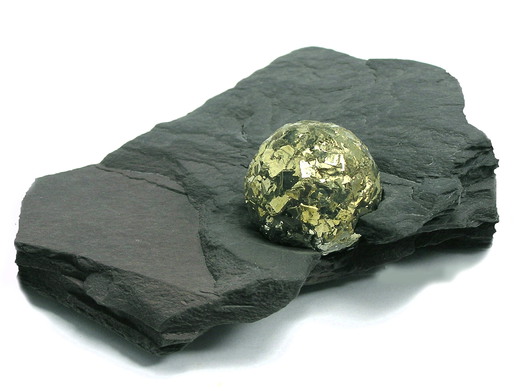
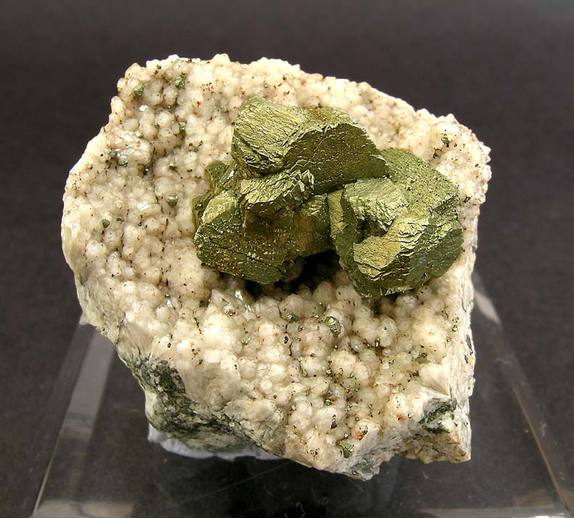
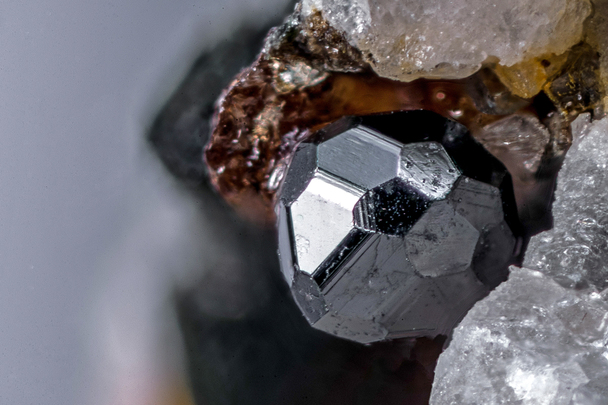
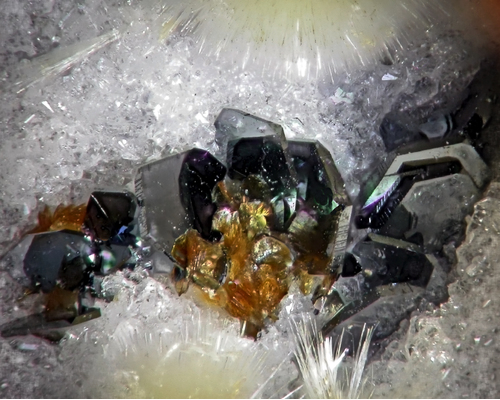
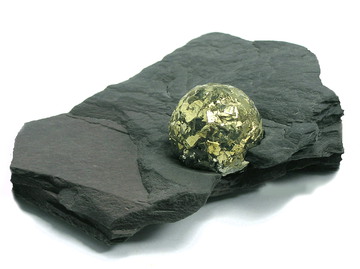
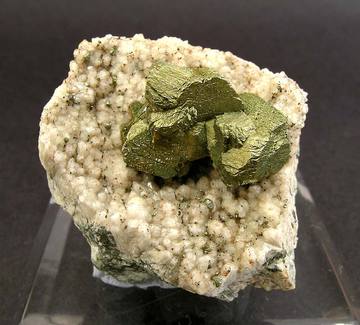


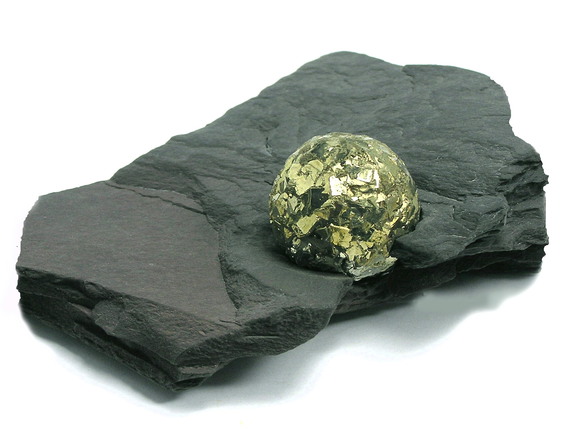

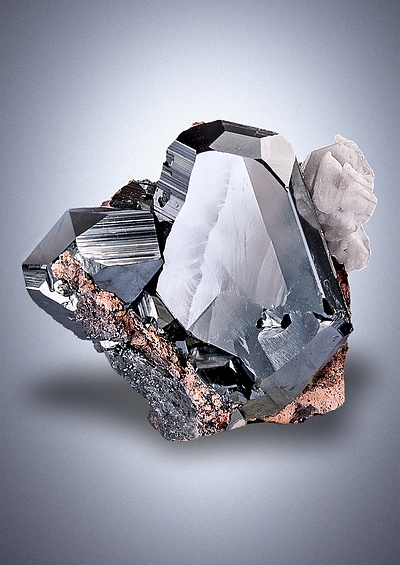

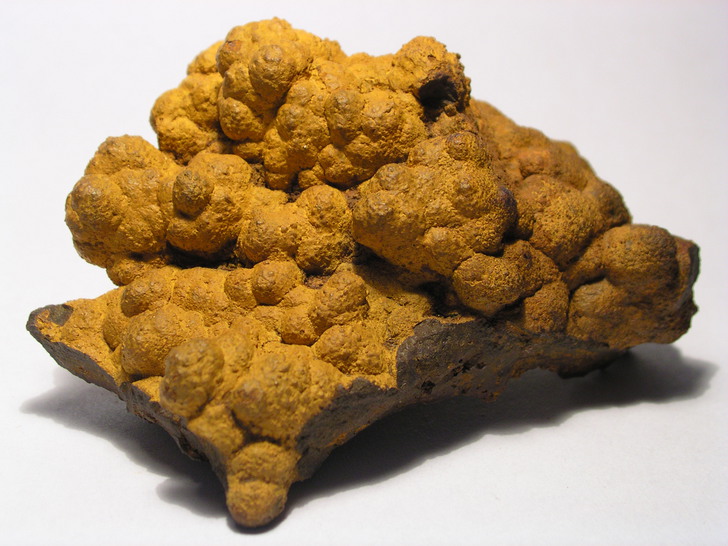
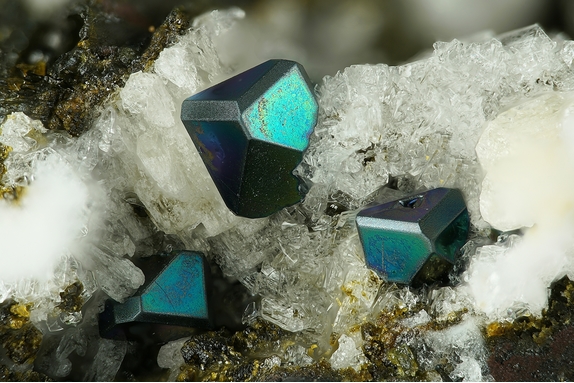






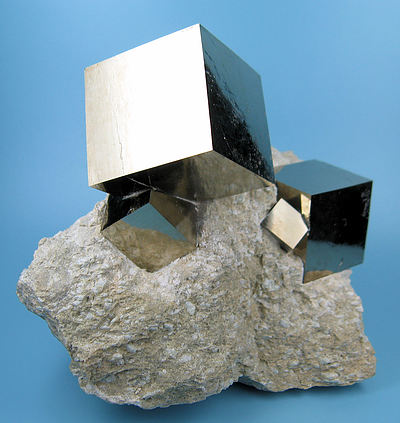

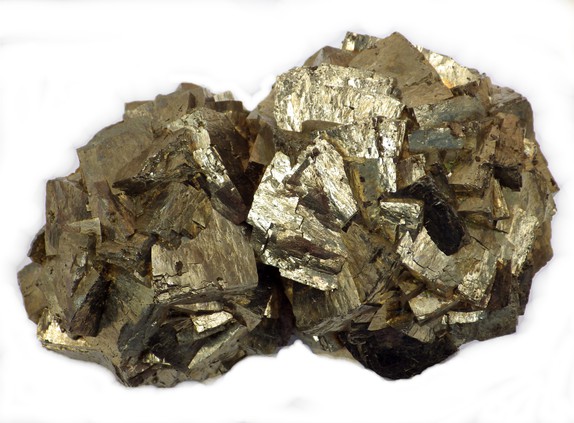



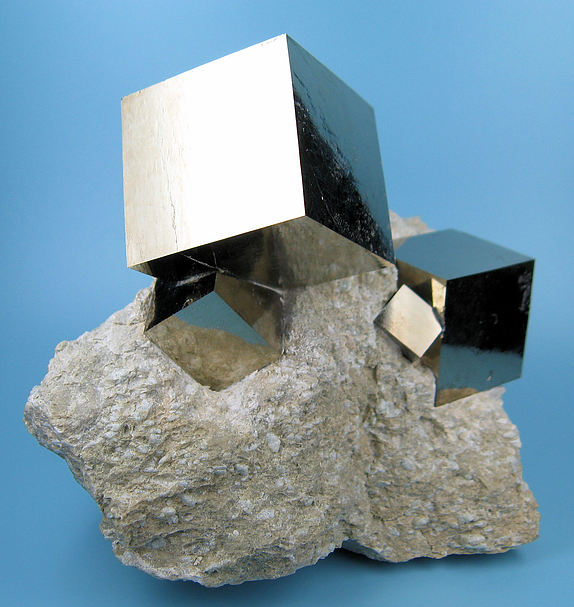




Millstream Station, Ashburton Shire, Western Australia, Australia